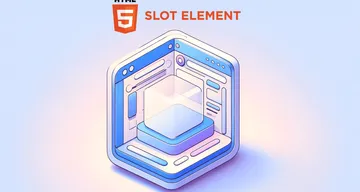Monolithic vs. Microservices Architectures

One of the first questions many developers would have to face when building a new app is whether they should begin with a monolithic app or one that leverages microservices. While the monolithic and microservices methods are the same when it comes to building robust apps, the backbone of the app varies greatly.
Once an app is built, changing the underlying architecture could be time-consuming and cumbersome. To avoid any expensive errors, there are several factors you must take into account when building new apps. Choosing a monolithic approach of the microservices architecture depends on which you deem the best fit for the app you want to build.
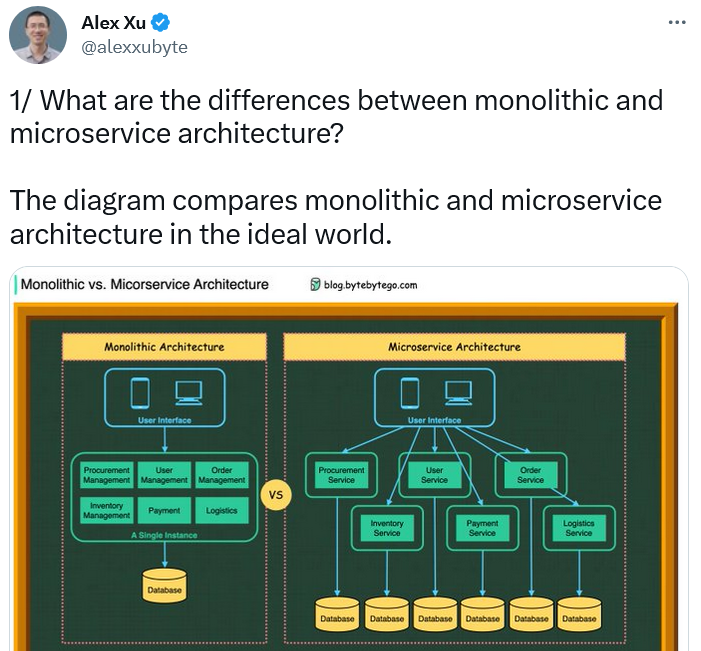
Monolithic Architecture: An Overview
A monolithic app is built as a single unified unit and is a traditional software program model. Often, the ‘monolith’ word is attributed to something glacial and huge, which is not far from the truth of the architecture. Furthermore, a monolithic architecture is one big computing network with a single code base that couples together all business issues.
Changing this app requires updating the whole stack by accessing the code base and then creating and deploying an updated service-side interface version. This makes updates time-consuming and restrictive. Monolith apps may be convenient early on for code management, cognitive overhead, and deployment ease, enabling everything to be released at once.
Monoliths are designed to be self-contained, in which the components of functions of the program are coupled tightly instead of loosely coupled, such as in modular software programs. Furthermore, in this architecture, every component and its associated components should be present for code execution or compiled for the software to run.
Single-tiered means that a monolithic app combines several components into one big application. Consequently, they tend to have big codebases, which again could be cumbersome in time.
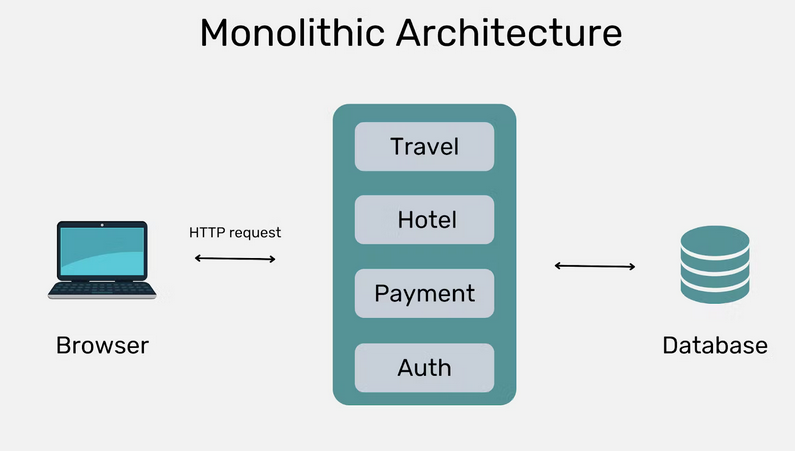
Image Source- Kubesimplify
Advantages of Monolithic Architecture
- Easy deployment. One executable directory or file makes for easier deployment. If the UI is packaged with backend code, there’s no need for breaking changes since everything exists and changes in one location.

- Easy development. Development is easier when an app is built with a single code base. With monolithic, no additional knowledge is required, and all the source code is in one place.
- Performance. In a centralized repository or code base, an API could often perform the same function that several APIs do with microservices. There’s no limitation from the perspective of business logic.
- Seamless testing. End-to-end testing could be done faster with a distributed app. Everything is clear, and only one service is tested without any dependencies.
- Ease of debugging. Debugging is easier with all the code found in one place, and you can follow the flow of a request and find a problem seamlessly.
Disadvantages of Monolithic Architecture
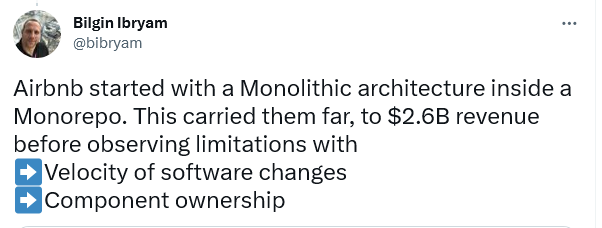
- Difficult to scale. Vertical scaling, necessary for a monolithic app, could be expensive and limited. Database queries could be optimized, but there’s a limit to this kind of optimization.
- Complexity later on. Changes made over time could inadvertently affect other codebase parts, resulting in more time needed to identify problems. If tasks are required to bring new functionality, there’s a possibility that the app will never be migrated.
- Infrastructure cost. In the event of performance issues, the entire monolithic service needs to be scaled, which could bring about additional expenses for app operability.
- Less flexibility. With the monolithic architecture, the technologies you can use are only those within the monolith. You could not use other tools even if they’re better at resolving issues.
Microservices Architecture: An Overview
An app built on this architecture splits up every part of the app into independent codebases, which perform one particular task. Often shortened to microservices, this architecture separates a big app into smaller parts. To serve a single user request, an app based on the microservices architecture could call on several internal microservices to compose its response.
Every component could be scaled and deployed independently of the other modules. These modules could then communicate with each other via an API to build the full functionality of an app. In software programming, the use of microservice has grown in the last few years.
The architecture enables frequent, fast, and reliable delivery of big and complex apps. Furthermore, it enables a company to evolve its tech stack. Every component could be built, deployed, operated, and scaled without affecting the function of the other services.
Moreover, the service need not share any of its code or implementation with others. Any communication between individual components occurs through well-defined APIs. Every service is designed for a set of focuses and capabilities for resolving a specific concern. If developers contribute more code to the service over time and it becomes complicated, it could be broken down into smaller services.

Microservices Architecture from Oracle
Advantages of Microservices

- Better Resilience. Troubleshooting and mitigating the root of the performance issues is easier. Apps within microservices could continue working even if there is one service that fails.
- More Scalability. Every modular unit could be scaled independently, and new components could be added without downtime. The entire system need not be taken down and deployed again, which enables seamless updates and software system functioning.
- Technological Freedom. Development teams could choose the best tool for each project. There are lesser tech dependencies between modules, so rolling back to previous iterations is less complex.
- Ease of Deployment. Continuous deployment is possible with the independent deployment of individual services, which ensures that the software will always remain updated for users.
Disadvantages of Microservices
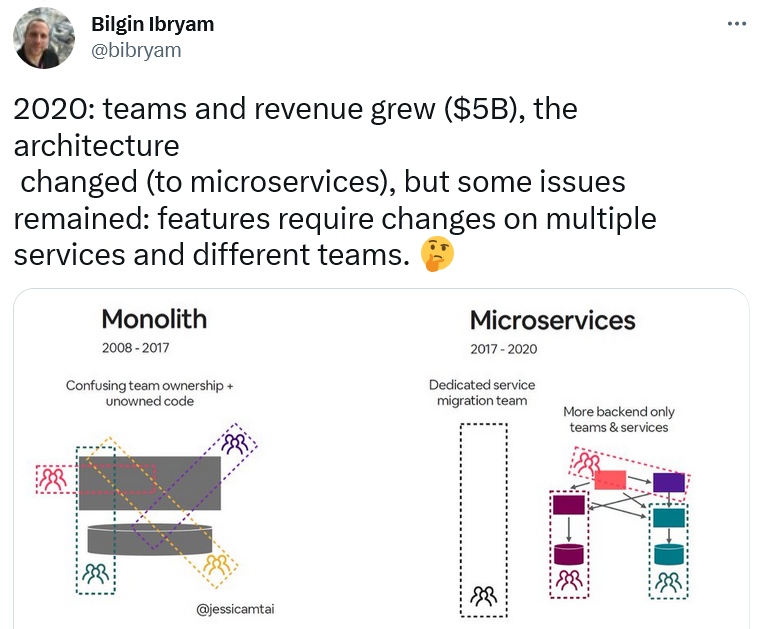
- More complexity. The way microservices are linked together adds more complexity. There might be a need for an interpreter because how different systems communicate could vary, increasing deployment complexity.
- Scattered testing and security. Every module has its own bugs and security vulnerabilities. Each service needs to be launched and tested first, and the app as a whole should be tested again.
- Requires specialized skills. It requires special knowledge that not all developers have. This could mean having a specialized person on board, which could incur additional expenses.
- Not good for small apps. Microservices are a good option for bigger apps. However, smaller apps would probably take more time and be challenging to implement.
- Transaction’s atomicity. Microservices consist of many local transaction microservices services. If any of them fails, then the rollback procedure is pretty much difficult and needs to be handled with different approaches like two phase commit.
Session Replay for Developers
Uncover frustrations, understand bugs and fix slowdowns like never before with OpenReplay — an open-source session replay tool for developers. Self-host it in minutes, and have complete control over your customer data. Check our GitHub repo and join the thousands of developers in our community.
Monolithic and Microservices—Which one to Choose?
Certainly, both architectures have advantages as well as disadvantages. That’s why developers should be cautious about using it when building an app. Check out some of the key elements to take into consideration.
Application Complexity
While more complex apps benefit from a microservices architecture, monolithic apps remain popular for a lot of simple apps because they’re easy to create and deploy. If you’re creating a simple app like a web forum or building a proof of concept before proceeding with a more ambitious project, then a monolith may be your best bet.
But according to Martin Fowler - You shouldn’t start a new project with microservices, even if you’re sure your application will be big enough to make it worthwhile.
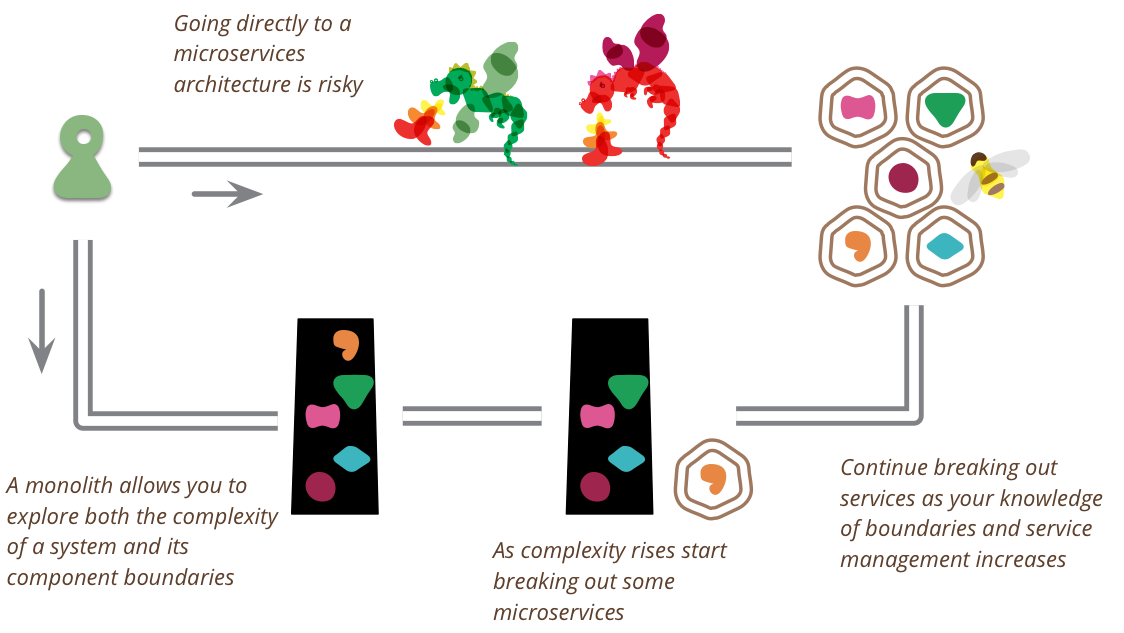
This is because starting with a monolithic approach will give you more information about the risks and scalability issues that you will be facing in the coming time. Software developed with a monolithic approach will fetch you enough feedback that will ultimately help you to scale it and switch to microservices granularly. The same aspects have been described in the above image, where you will see that going directly for microservices architecture will have its own hurdles and risk. In contrast, a monolithic approach will help you to explore the complexities, and then later you can solve them with a microservice approach.
Team Size and Skills
One of the top deciding factors in what architecture to use is the number of developers working on a project. It would be difficult to build a microservices app if your team has no experience with microservices. Monoliths are great for single developers of smaller development teams. However, if you have an experienced team later on, starting with microservices saves you time in the future.
Cost and Time
Time and cost are also very important considerations. Monolithic apps will cost you more at the start and as your brand grows, but they could be faster to build and more cost-effective. The initial costs in developing microservices are usually high but could result in cost savings as the app scales in the future.
Future Growth
In time, monoliths could become more difficult and more complex to manage and may have problems in scaling to meet user demand. If you’re thinking of significantly growing the number of users, expanding the functionality, and growing the team, then a microservices architecture is the best choice to scale more easily. Nevertheless, apps built for limited use instances often are successful using the monolithic architecture.
Final Thoughts
Overall, there are benefits to both monolithic and microservices. Keep in mind that you will have more benefits if you have full control of each of the components of your app. From there, you can choose which architecture you would want to apply.

